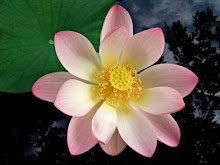
Trout Lily
Erythronium americanum
Other Names: Adder's tongue, American trout-lily, Dog's tooth violet, Serpent's Tongue, Yellow Adder's-tongue, Yellow fawn-lily, Yellow Snowdrop
HabitatA North American native perennial found growing in damp, open woodlands from New Brunswick to Florida and west to Ontario and Arkansas. Cultivation: a member of the Lily family Trout Lily is cultivated by seed or transplanting of the bulb or corm in fall. Prefers slightly acid well-drained soil, plenty of humus and requires semi-shade. The root is a deeply buried, bulb-like corm, light brown, about 1 inch long, and solid with white starchy flesh. Two or three leaf blades grow from the base and are about 3 inches tall, oblong, smooth, dark green, with purplish mottling, and about 1 inch wide. The slender stem is 3 to 4 inches long and leafless. The flowers of Trout Lily can be bright white or creamy colored to bright yellow it is about 3 inches across, lily-like and drupes with the six petals folded upwards. It blooms in April and May. Gather edible fresh leaves, bulbs and flowers in spring and root in summer to fall. Dry root for later medicinal herb use.
| ||||

Tidak ada komentar:
Posting Komentar